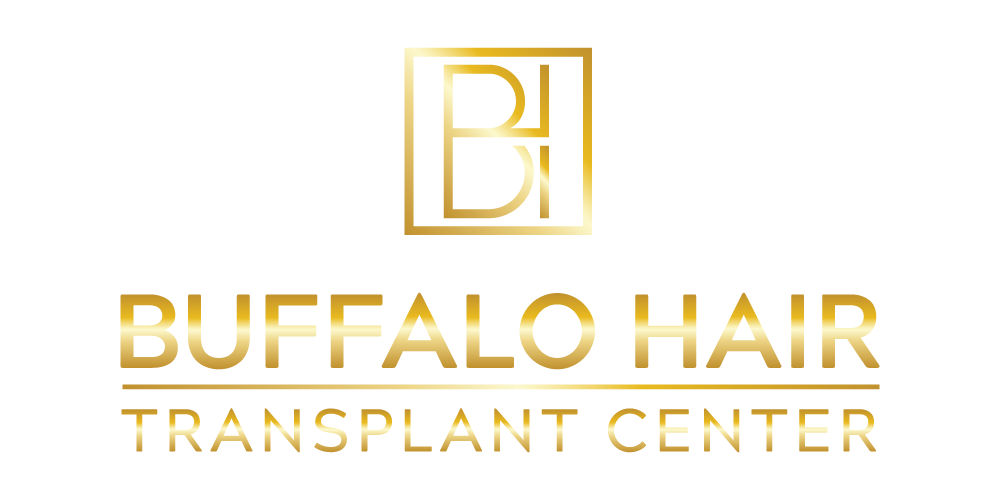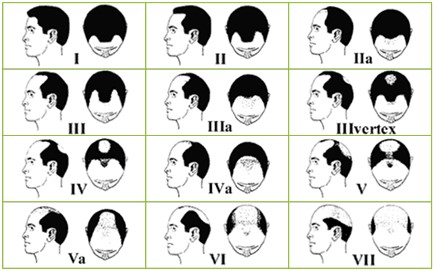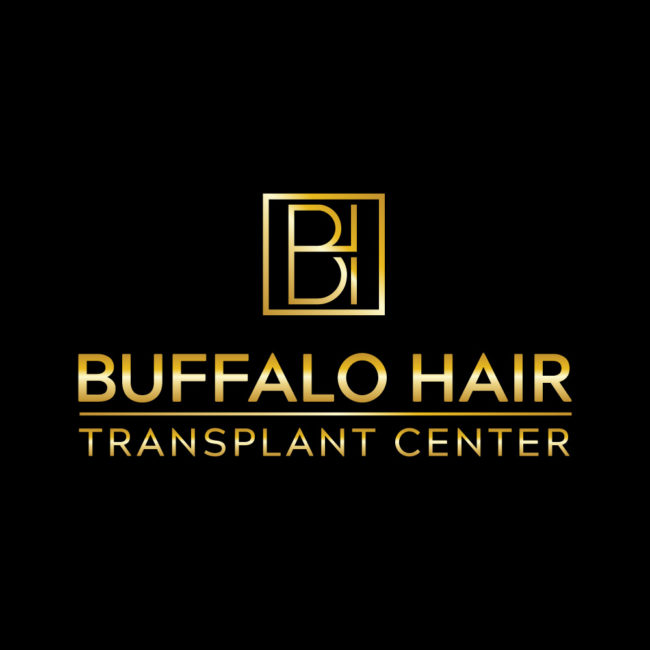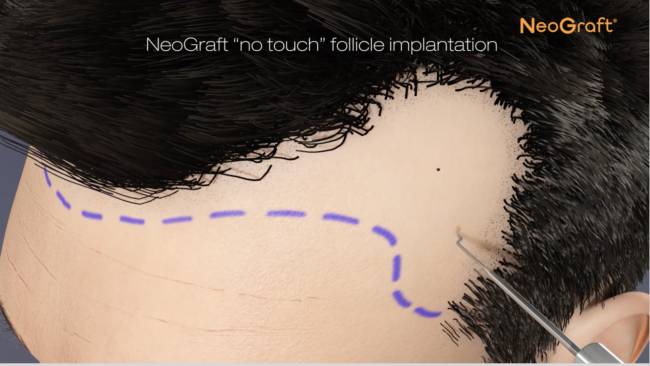Hair Restoration Terms | Buffalo Hair Transplant Center
Hair Restoration Surgery encompasses numerous Procedures & Terms:
- ALOPECIA: The medical term for baldness.
- ANDROGENIC ALOPECIA: The most typical pattern of balding whereby the balding pattern is controlled by hormones and passed along via heredity.
- ALOPECIA REDUCTION: A procedure that involves removal of a strip of balding upper scalp in the crown and vertex areas. The natural flexibility of the scalp is used to stretch the surrounding hairy scalp into place. It can be repeated in certain cases. See also “Scalp Reduction.”
- CROWN AREA: The area in the top/back portion of the head which contains a swirl or spiral pattern of hair growth. Also called the ‘vertex,’ it may be the first area where male pattern baldness is noticed.
- DONOR AREA: The fringe above the ears and around the back of the head where hair follicles are genetically programmed to remain intact and grow throughout life.
- DONOR DOMINANCE: The concept that hair follicles transplanted from the donor area will continue to grow in the recipient area.
- FEMALE PATTERN BALDNESS: A hereditary pattern of baldness found in women typically characterized by a diffuse thinning of hair and/or hair loss at the front portion of the scalp behind the frontal hairline. May or may not include a slight recession or thinning in the temples and only very rarely ends in complete baldness at the top of the scalp. Also called “Female Hereditary Hair Thinning.”
- FOLLICULAR UNIT: A follicular unit is a naturally occurring grouping of one, two, or three (and rarely, four) hair follicles found in the skin. The average follicular unit contains about 2.4 hairs.
- FOLLICULAR UNIT EXTRACTION (FUE or FOX): Follicular Unit Extraction is a method of extracting single follicular units, one at a time, from the donor site by using a tiny punch excision. A punch used to extract single follicular units is typically 1mm diameter or less.
- FOLLICULAR UNIT GRAFT: A graft consisting of a single follicular unit. In appropriate patients, artistic planning – in addition to the correct angulation, orientation, and positioning of follicular unit grafts – can yield an exceptionally “natural” appearance of the transplanted hair.
- FOLLICULAR UNIT MICROGRAFTING: A method by which large numbers of follicular units are harvested from the donor site (usually in a long strip or ellipse) and then microscopically dissected into grafts containing single follicular units.
- GRAFTING: A variety of procedures where hair-bearing skin is removed from the lower scalp at the back of the head-the “donor area”-and transferred to thinning or balding areas. The most popular varieties are micrografting (1-2 hairs) and minigrafting (3-8 hairs). A few surgeons selectively use round grafts which have 10-20- hairs each.
- HAIR ECONOMICS: A theory that states only a limited or decreasing supply of hair exists, but the demand for hair increases as balding patterns develop.
- HAIR FLAPS: Techniques to rotate large portions of hair from the sides and back of the scalp to the front and central areas of the head. Most effective when used with a tissue expander. See also “Scalp Rotation Flaps.”
- HAIR FOLLICLE: A strand of hair and its root which is extracted from the donor area and transplanted to the recipient area during hair restoration surgery.
- HAIR GRAFTS: Hair follicles that have been harvested from the donor area and are ready for transplantation into the recipient area of the scalp. The numbers of hair follicles per graft vary widely depending upon the transplantation technique used. A graft may contain a single hair follicle, a single follicular unit, multiple follicular units, or even 20 or more follicles (as in a large round graft).
- HAIR “PLUGS”: A slang term typically used to describe the large round grafts that were used more commonly years ago.
- HAIR TRANSPLANT: A surgical technique that transfers hair follicles from the donor area to the recipient area.
- HAIRLINE REFINEMENT: Hairline Refinement or “Hairline Correction” refers to the use of a variety of newer, more delicate grafting techniques to alter, camouflage or soften the “pluggy” looking results of older hair transplant techniques.
- MALE PATTERN BALDNESS: An inherited condition in men which is triggered by the hormone Dihydrotestosterone which causes gradual miniaturization (and eventual loss) of hair follicles. Starting anytime after puberty with a recession of the hairline and thinning of the crown areas, it can eventually lead to complete baldness at the top of the scalp. The areas around the sides and back of the scalp are not typically affected by male pattern baldness.
- MICROGRAFT: A graft containing 1 or 2 hairs, obtained from the donor area with a micropunch or sliced off from a round graft (see below). A micrograft is typically placed into holes made in the scalp with a microneedle or punch.
- MINIGRAFT: A graft containing 3 or 4 hairs (small minigraft) or 5 or 6 hairs (large minigraft). There are many variations of minigrafts derived from round grafts.
- MULTI-UNIT GRAFTS (MUG): Grafts that contain two or more follicular units in a single graft. This term replaces the older “minigraft”. In practice today, MUGs contain 2-6 follicular units per graft.
- MULTI-UNIT GRAFTING: Hair transplantation using multi-unit grafts. In practice, these grafts may be placed into small round holes, slots, or slits. This would always be in combination with the use of FUT in the same procedure.
- RECIPIENT AREA: Area where hair loss has occurred and hair follicles will be implanted during a hair transplant procedure.
- ROUND GRAFT: The first type of graft used in hair transplantation, a round graft has many variations. Harvested with punches of various sizes, a large round graft may contain many hairs (20 or more). The round graft is obtained from the donor site by surgical removal and may be used “as is” or may be sliced into smaller sections for micro-, mini- or slit grafts.
- SCALP REDUCTION: A procedure that removes bald scalp and brings the edges of hair-bearing scalp closer together. Scalp reduction is most often used in patients with crown baldness. See also “Alopecia Reduction.”
- SCALP ROTATION FLAPS: A type of procedure that involves the lifting and rotation of a strip of hairy scalp which is placed into an area of simultaneously removed balding skin.
- SLIT GRAFT: Hair obtained from a donor site directly or sectioned from a larger round graft is inserted into a slit made in the scalp by the tip of a scalpel blade.
- TEMPLES/TEMPORAL AREA: The two upper outer corners where the forehead meets the hairline. This is usually the first area where male pattern baldness is observed, causing the hairline to recede.
- TEMPORAL POINT: The two triangular shaped areas of hair located in the lower outer corners of the forehead, where the temporal hairline meets the sideburns.
- TISSUE EXPANDER: A reconstructive balloon-like device which can be used to enlarge hair-bearing scalp on the sides of the head, providing a larger supply of hair with which to replace the bald areas. Often used in hair flap techniques and scalp reductions.
- TISSUE EXTENDER: A device used to stretch scalp. Often used to speed up the process of scalp reductions by stretching the sides of the scalp that contain hair to achieve rapid elimination of bald areas. The tissue extender is temporarily inserted below the scalp and remains in place for a three-week period.
- VERTEX AREA: The area in the top/back portion of the head which contains a swirl or spiral pattern of hair growth. Also called the ‘crown,’ it may be the first area where male pattern baldness is noticed.





